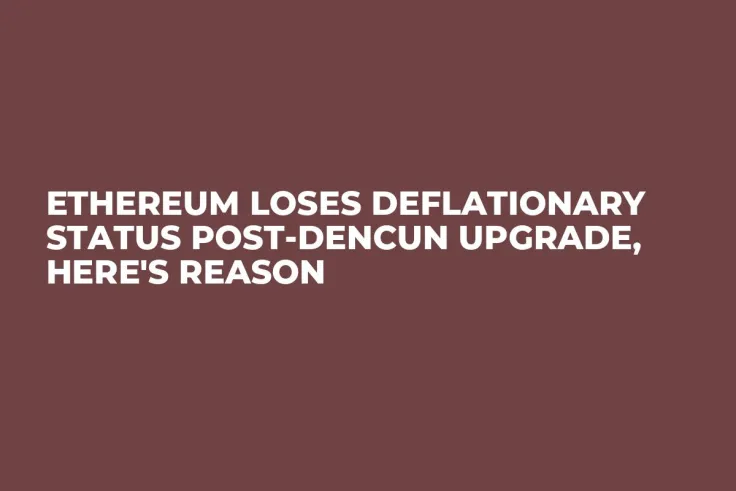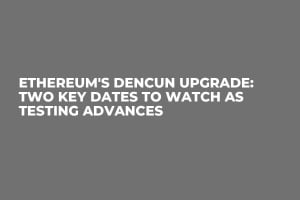
Disclaimer: The opinions expressed by our writers are their own and do not represent the views of U.Today. The financial and market information provided on U.Today is intended for informational purposes only. U.Today is not liable for any financial losses incurred while trading cryptocurrencies. Conduct your own research by contacting financial experts before making any investment decisions. We believe that all content is accurate as of the date of publication, but certain offers mentioned may no longer be available.
Earlier in the year, the Ethereum network underwent the Dencun upgrade, which was a combination of the Cancun and Deneb updates - a significant step forward for Ethereum, aimed at improving scalability and lowering transaction fees.
This upgrade, which introduced Proto-Danksharding and temporary data blobs for cheaper layer-2 roll-up storage, has inadvertently shifted Ethereum from its deflationary status to an inflationary one, recent analysis from on-chain data firm CryptoQuant indicated.
According to CryptoQuant, the Dencun upgrade has made ETH inflationary again, as a structurally lower amount of transaction fees burned on Ethereum has not decreased the total supply of ETH for it to remain deflationary.
Historically, the total amount of fees burned has been positively correlated with higher network activity or the total number of transactions.
Before the Dencun upgrade, higher network activity resulted in higher fees burned and, thus, a lower ETH supply. However, the narrative changed after the Dencun upgrade as the overall amount of fees burnt decoupled from network activity.
The Ethereum network underwent a structural change to the downside after Dencun, CryptoQuant Head of Research Julio Moreno noted, as the median transaction fee, and hence the total fees burned, plummeted despite significant network activity.
The Dencun upgrade had the impact of lowering the transaction fees users pay but also lowered the total amount of fees that get burned, with the corresponding effect of not decreasing the total supply of ETH to keep it deflationary.
As a result, the total amount of fees burned fell to its lowest point since the Merge Upgrade in September 2022, and the new supply of ETH turned positive again, increasing at the fastest daily rate since the Merge upgrade.
Given that the new supply of ETH is now increasing at the quickest daily pace since the Merge, as fees burned have decreased, and at the present rate of network activity, the Ethereum network has become inflationary.

 Dan Burgin
Dan Burgin Tomiwabold Olajide
Tomiwabold Olajide Arman Shirinyan
Arman Shirinyan Godfrey Benjamin
Godfrey Benjamin